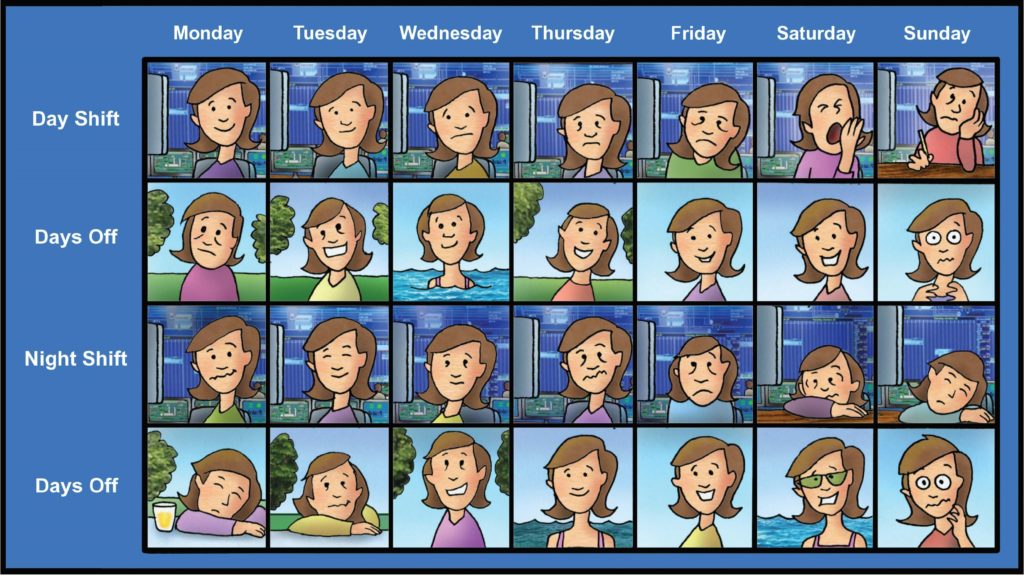I’ve heard it said that the best shift schedule is the one you are not working. That’s a common perception, possibly because shift work is hard work no matter how it’s arranged within the weeks and months of a person’s work-life. Because shift-work creates a risk for fatigue that is greater than working a traditional daytime-only schedule, the shift-worker is required to receive ongoing education about managing fatigue. Through this education and your personal experience, you know that sleep is the only means for repaying your sleep debt.
Which schedule results in less fatigue? The answer to that question is not clear and varies in opinion. Here’s an overview of the most widely used shift schedules.
The DuPont. Named after the company where it originated in the late 1950s, the most notable feature of this schedule is seven or eight continuous days off during every 28-day rotation. The DuPont schedule generally includes maximum work stretches of 4 days or nights and a short 24-hour break between alternating 3 day-shifts and 3 night-shifts.
- Pro: a built-in mini vacation every 28-day cycle.
- Con: The 24-hour break gives little time to recover between multiple-day work stretches.
The 2-3-2. This schedule became popular in the 1980s. It is sometimes known as EOWEO for “Every Other WeekEnd Off”. Employees follow a 14-day cycle (either all days or all nights per cycle) of: 2 days on, 2 days off, 3 days on, 2 days off, 2 days on and 3 days off.
- Pro: no more than three night-shifts in a row; every other weekend off.
- Con: no more than three days off in a row at any point during the 14-day cycle; this schedule requires a rapid rotation.
Four On, Four Off. Employees work 4 days or nights, then have 4 days or nights off.
- Pro: allows workers time to recover between rotations.
- Con: because of the 8-day cycle, days off move forward one day per week.
Your company’s shift schedule can be evaluated in a systematic and practical way using fatigue-modeling software such as FAID®. The use of biomathematical modeling can determine the fatigue risk profile of a company’s current schedule. It helps identify when the greatest risks for fatigue exist by evaluating and analyzing hours of work fatigue exposure. The goal is to manage the risks of fatigue related errors by pointing out when someone will be most susceptible to fatigue.
The Stanford Sleepiness Scale is a quick and easy way to assess how alert you are feeling. It is subjective in nature but provides a basic measurement on your level of alertness. The scale rating ranges from 1-feeling active, vital, alert, wide awake down to 7-no longer fighting sleep, soon onset of sleep, having dream-like thoughts and finally 8-asleep. A rating of four or five indicates you should take a break from the console to mitigate your fatigue. If you routinely fall below a rating of five, you could be suffering from a lack of quality sleep.
Every shift schedule has advantages and disadvantages. Because we are human, we are prone to fatigue. Your company has the responsibility of providing adequate time for you to get eight hours of sleep, regardless of scheduling. Take your responsibility for adequate rest seriously!
MANAGING FATIGUE EDUCATIONAL PROGRAM | Scarlet Knight © 2019 Please Distribute to Others.




